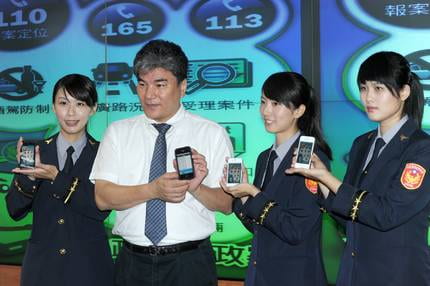 TAIPEI–Innovations in mobile phone applications here are driven and enabled by public-private partnerships at the national and local levels.
TAIPEI–Innovations in mobile phone applications here are driven and enabled by public-private partnerships at the national and local levels.
At the national level, the government embarked on an eTaiwan initiative ten years ago, which evolved in 2007 into Mobile Taiwan, according to Steve Lin of the country’s Ministry of Economic Affairs, during an interview here.
Economic Affairs, during an interview here.
Now, Mobile Taiwan is being implemented in Mobile Education and in access to all government services via handheld devices. And these government efforts, says Lin, are to create catalysts to drive innovation in “value-added” industries, patterned after US national laboratories and incubation centers.
Government-funded and/or -led programs include traditional public functions ranging from education and access to public libraries to the latest information on traffic and national railway timetables – all accessible via cell phones. The initiative also created a public network that can support telemedicine and innovative medical devices, another Taiwan research priority. The network also supports applications for video conferencing, for remote research collaborations and even for entrepreneurs working from their homes.
The national government also sponsors competitions under its Mobile Taiwan Applications Promotion Program Office, awarding funding to companies for new applications they create. Awards have already been made in local areas, town by town, for apps in education, tourism, agriculture, traffic control and even on-line shopping, coupons and festivals.
Unexpected innovations and partnerships are one goal of the initiative, and Huann-Shiuh Shy  of the Economic Affairs ministry cited an example: The Taiwan Computer Association joined with the country’s association of bicycle manufacturers to create a “smart bike,” an entirely redesigned bicycle with integrated GPS, camera and mobile phone devices. For individuals, it is a social network app – send live video to friends via your Facebook page. And for bicycle teams or groups on holiday, it is a new way to share the ride, as it were. But it doesn’t take much imagination to think of other applications, from live news coverage to video for first responders to fires and other emergencies.
of the Economic Affairs ministry cited an example: The Taiwan Computer Association joined with the country’s association of bicycle manufacturers to create a “smart bike,” an entirely redesigned bicycle with integrated GPS, camera and mobile phone devices. For individuals, it is a social network app – send live video to friends via your Facebook page. And for bicycle teams or groups on holiday, it is a new way to share the ride, as it were. But it doesn’t take much imagination to think of other applications, from live news coverage to video for first responders to fires and other emergencies.
All of this is to help Taiwan move to what Lin called “the smiling curve,” advancing from manufacturing and the country’s existing strength in integrated circuits into higher value-added and branded services. Manufacturing chips for the next iPhone is a big business (and Taiwan will do that, too), but integrated high-margin telecom companies may derive as much as 60% of their revenue from services, according to Lin, not hardware.
The government engine driving this initiative is ITRI, Taiwan’s Industrial Technology Research Institute. ITRI employs 6,000 researchers, files ten patent applications a day according to Lin, and was cited in a report to President Obama on competitiveness as one of the two most successful government research organizations in the world. Perhaps more important was another statistic he cited: ITRI research has resulted in the formation of 170 new companies.
Next: How the city of Taipei leveraged its free citywide wifi network to drive economic activity throughout the metropolitan area.